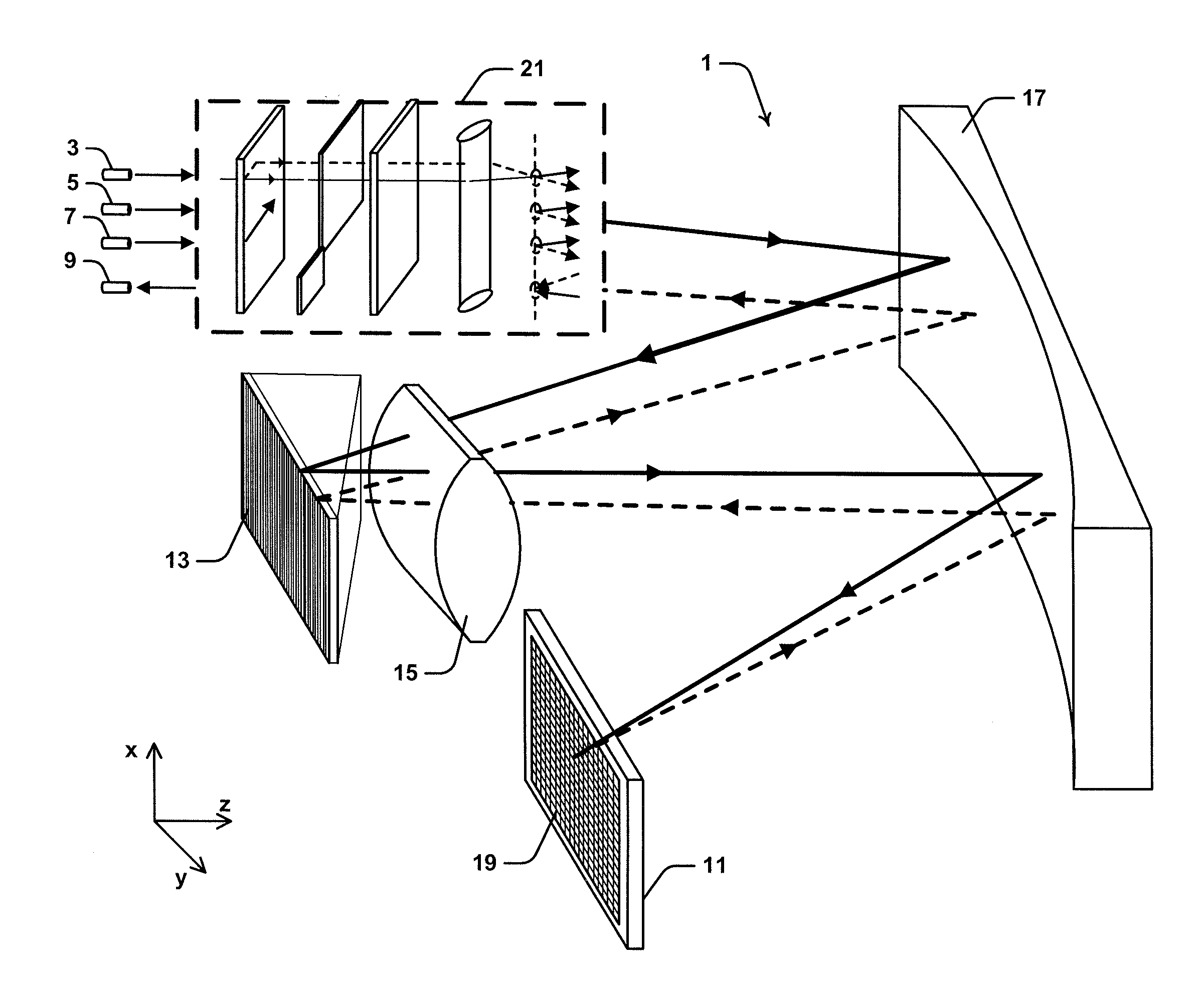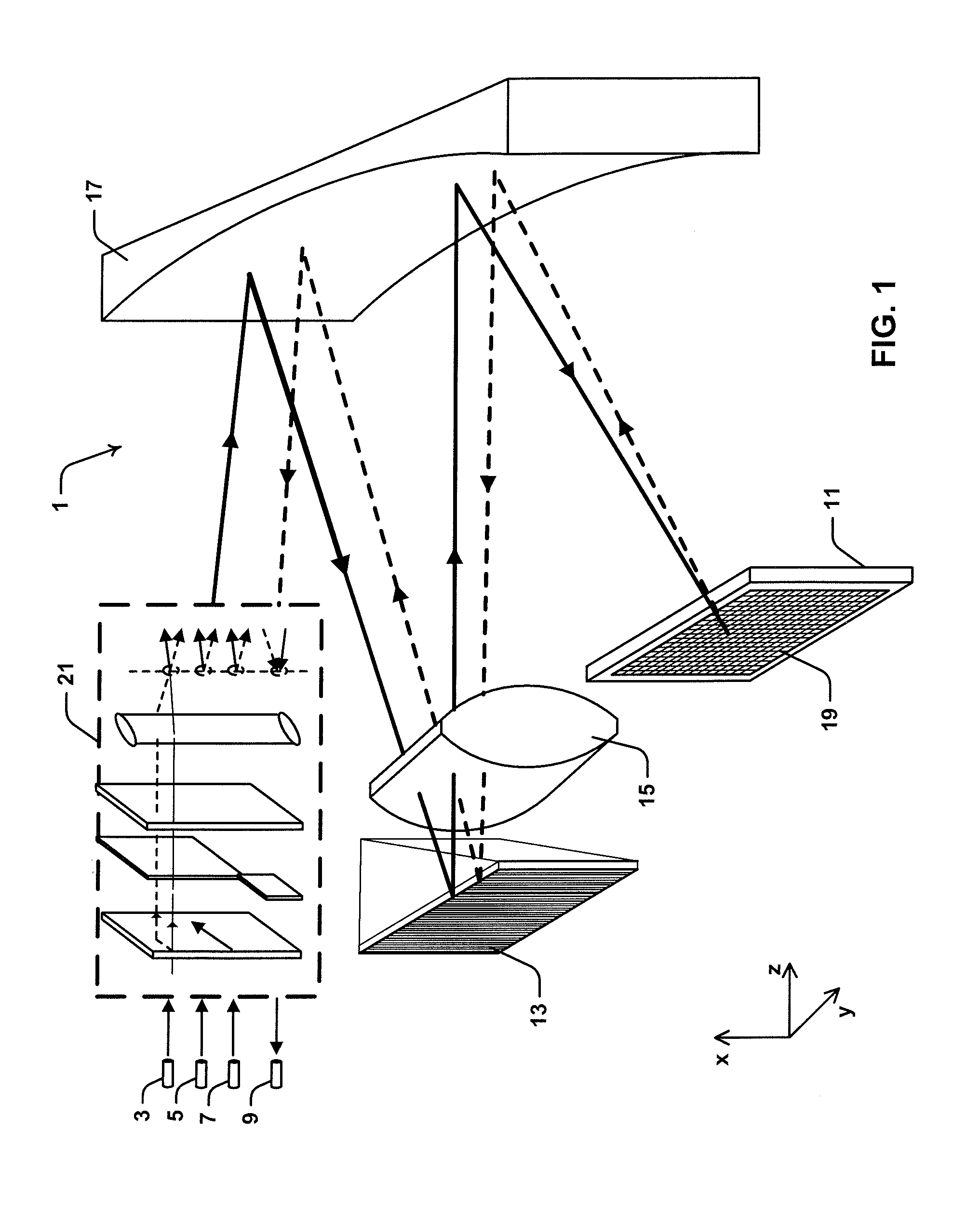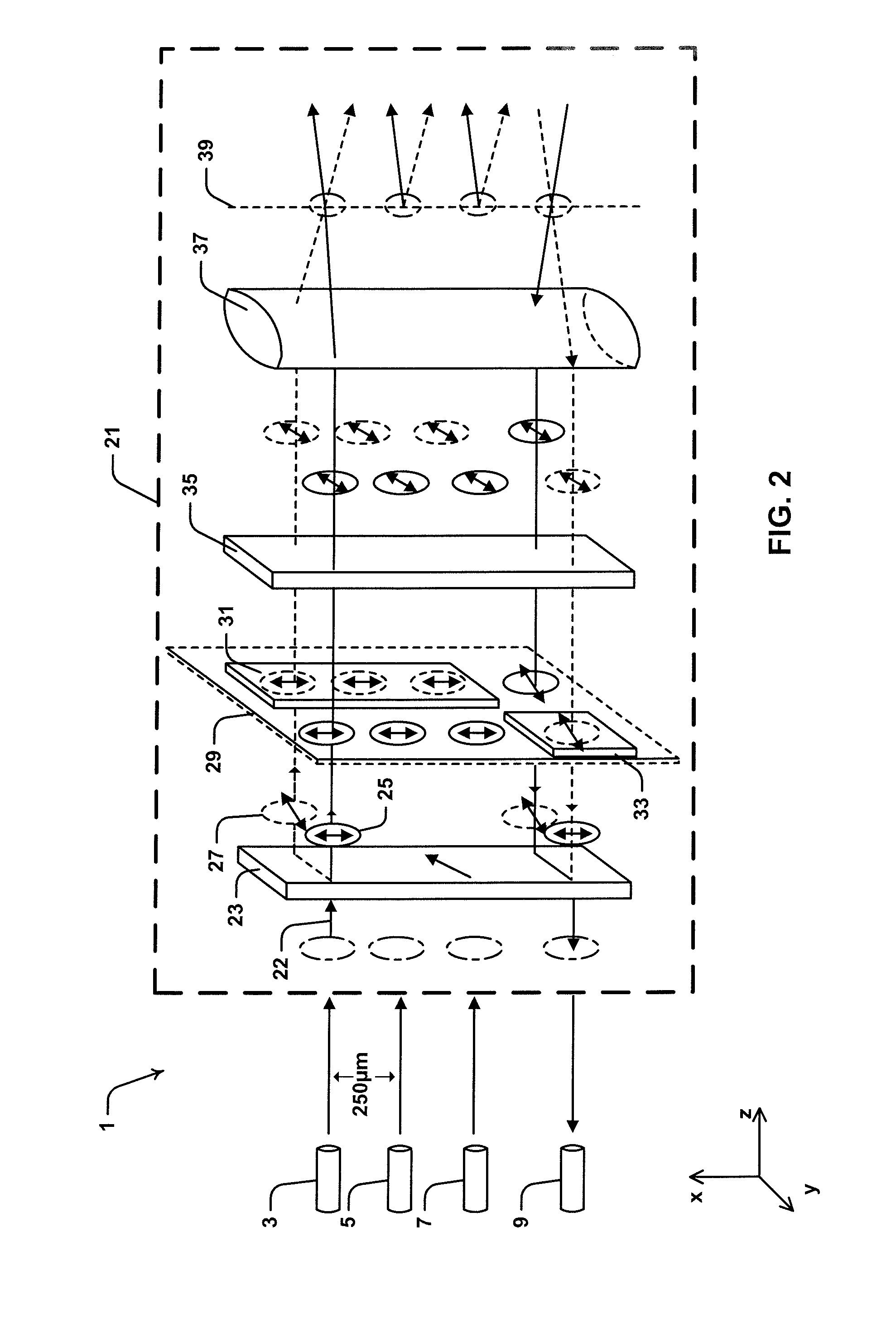Polarization Diverse Wavelength Selective Switch
a wavelength selective switch and wavelength technology, applied in multiplex communication, optical elements, instruments, etc., can solve the problems of directivity issues, limit the number and location of possible ports and the functionality of the device, and the device's siz
- Summary
- Abstract
- Description
- Claims
- Application Information
AI Technical Summary
Benefits of technology
Problems solved by technology
Method used
Image
Examples
second embodiment
[0142]Referring now to FIG. 14, there is illustrated a second embodiment beam confining module 108. Module 108 includes a coupling prism 114.
[0143]To confine the beams from the two sources, beam 81 from Source A is directed onto a first reflective surface 116 of prism 114 which reflects beam 81 at an angle substantially 90° from the input direction. Beam 89 from Source B is directed onto a second reflective surface 118 of prism 114 and is also reflected at an angle substantially 90° to the input direction. Reflective surfaces 116 and 118 are disposed substantially parallel with each other but are spatially separated. The reflection of beam 81 occurs at a longitudinally separate location from that of beam 89 and, upon reflection, this separation translates to a controlled transverse separation.
[0144]The focal point from focusing lens 37 of module 97 is located at surface 116 and the focal point from lens 37 of module 99 is located on transmissive surface 112. In other embodiments, th...
third embodiment
[0146]Referring to FIG. 15, there is illustrated a third embodiment beam confining module 120. Module 120 operates in substantially the same manner as module 108 of FIG. 12 but is positioned to output confined parallel beams 81 and 89 at an angle greater than 90° to the input direction. In various embodiments, beams 81 and 89 from sources A and B are able to be confined to arbitrary spatial offsets and directed at arbitrary angles by varying the orientation and / or distance between surfaces 116 and 118.
[0147]Although, beams 81 and89 are illustrated as having an input spatial separation of 3 mm in FIGS. 14 and 15, it will be appreciated that this spatial separation is exemplary and dependent upon the particular optical system. In other embodiments, beams 81 and 89 are input from sources A and B with different spacings.
[0148]The fiber ports, polarizing modules 97 and 99 and beam confining module 101 collectively define a “front end” of WSS device 75. The “back end” is defined by the sw...
PUM
 Login to View More
Login to View More Abstract
Description
Claims
Application Information
 Login to View More
Login to View More - R&D
- Intellectual Property
- Life Sciences
- Materials
- Tech Scout
- Unparalleled Data Quality
- Higher Quality Content
- 60% Fewer Hallucinations
Browse by: Latest US Patents, China's latest patents, Technical Efficacy Thesaurus, Application Domain, Technology Topic, Popular Technical Reports.
© 2025 PatSnap. All rights reserved.Legal|Privacy policy|Modern Slavery Act Transparency Statement|Sitemap|About US| Contact US: help@patsnap.com



